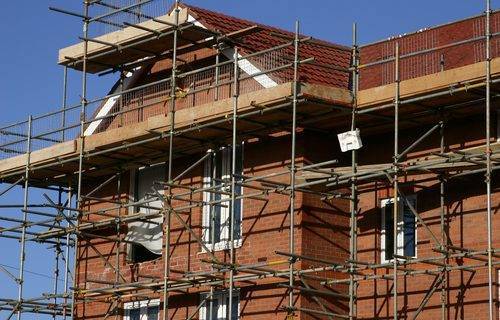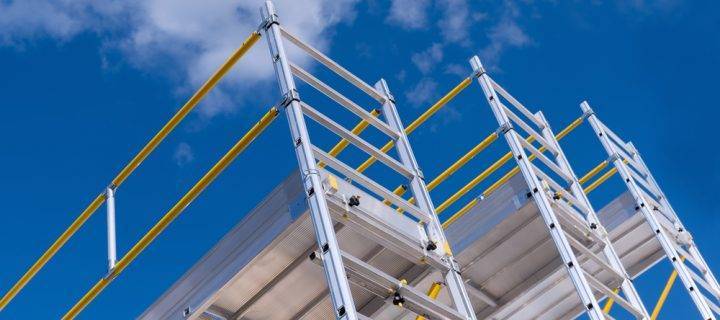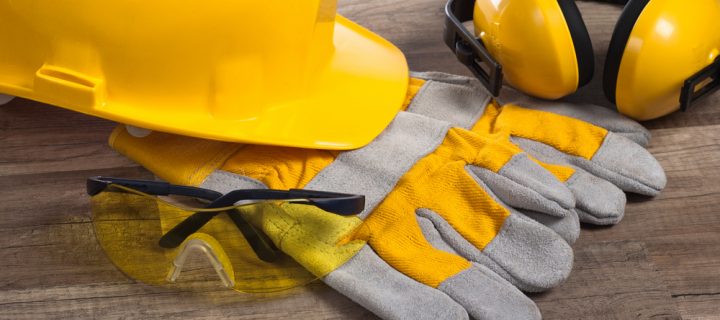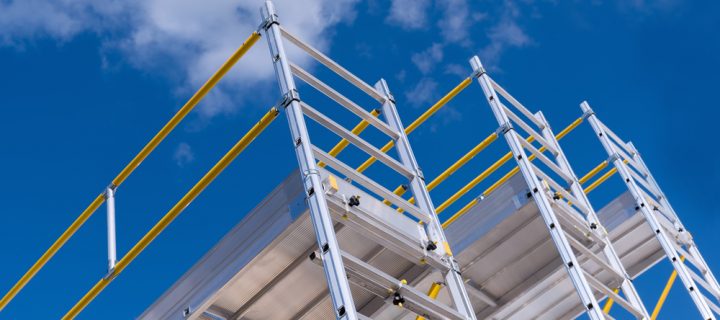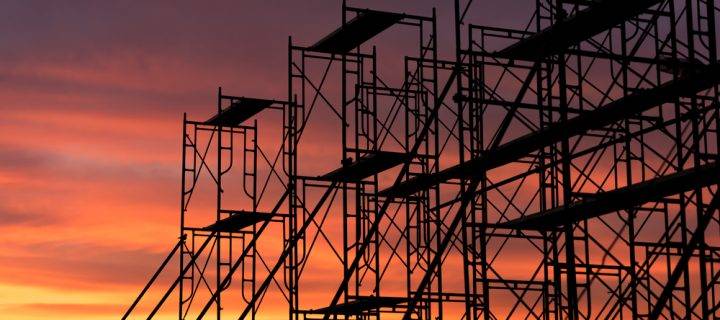While you may not think that domestic roofing repairs need a professional to complete, scaffolding will be required for health and safety purposes. Before attempting roof repairs, you will need to consider how to complete the job safely whilst ensuring the building remains in a good and stable condition. If your repairs are not done properly, water will be able to get through and damage internal ceilings and walls which is costly and inconvenient to rectify. If you have doubts about your ability to fix a roofing issue, it is probably more cost-effective to talk to an expert. 5 questions to ask when considering scaffolding What are the rules? Health and safety rules will always advise having a proper risk assessment carried out if more than four people are working at height. The results will often conclude the safest way to complete this task is by using a scaffold. How big is the job? Jobs that involve working on the entire roof will always require scaffolding. These platforms are designed to keep workers at height safe and those based on the ground. If there is a risk of tools or materials falling from the roof, then a scaffold with edge protection will be needed around the platform. If materials are being passed from the roof to the ground a chute will need to be fitted to the edge of the scaffolding to allow for safe transportation. How long will the job take? If your job is likely to last more than two days, especially given the unpredictable British weather, we would always advise using a scaffold. This helps to cover up an unfinished roof plus you can protect the roof, tools and materials from adverse weather. Do I need a platform? If your repairs involve working on a chimney you should always use scaffold as a safe working platform. While there are other alternatives, none are as safe as systems from Network Scaffold as your safety is always worth investing in. When is scaffolding not needed? If your job is quite simple and takes no more than a day, using a safely secured ladder is all you will need. However, consider an alternative if there is any risk of...
Read Moreabout Do I need scaffolding for roof repairs?A warning has been issued after claims were made by scaffolding suppliers who are being targeted by suspected fraudulent customers. While it is unclear whether the spoofing scam was successful, the company involved has reported that individuals have been contacting the firm claiming to be a customer from ‘bonafide’ businesses. The individuals were spoofing the landline phone numbers of the companies to make them look like legitimate customers. They would place large value orders for scaffold materials and quote postcodes for delivery with the caller always asking for any return calls or queries to be directed to a mobile number. Scaffold trade body the NASC has sent out emails urging its UK supplier members to be vigilant of the scam. The most reliable scaffolding suppliers Network Scaffold Services are the leading provider of scaffolding, edge protection, alloy towers plus we have recently started supplying safety decking and plastic hoarding. Our team of specialists work in accordance and compliance with the latest regulatory laws. This type of work is considered dangerous with not just workers at risk as pedestrians are also at risk when health and safety measures aren’t followed. As a result, Network Scaffold have an up-to-date safety policy that outlines how we conduct our business. No matter the requirements for your site, you can rely on us to provide scaffold solutions that can be designed to ensure your project is completed on time and most importantly, safely. No-Obligation Quotes from Network Scaffold Network Scaffold offer all of our prospective clients a free no-obligation quote on all of the services we have discussed above. If you have any questions please do not hesitate to contact us and one of our experienced team will be more than happy to assist you. Alternatively, visit our FAQ section, where we have listed some of our most frequently asked questions from...
Read Moreabout Scaffolders warned regarding scam customersHere at Network Scaffold we often get asked about planning permission guidelines by potential clients who may require scaffolding. While every project is different there are certain rules you will need to universally comply with. It is always a useful exercise to check with your local authority before committing to any project, as there will be times permitted development will not apply. For example, if you live in a designated area or a listed building or have already altered your home considerably then permitted developments might not comply. Larger build projects, including knocking down and rebuilding or adding a big extension are instances where permission is needed from your local authority. Is Planning Permission Needed for an extension? You will be able to build a single-storey extension without planning permission as long as you stay within the parameters below – The extension does not sit forward of the principal elevation Materials should be similar Where the extension is within 2 metres of any boundary, the eaves cannot be higher than 3 metres and no more than 4 metres in height otherwise Rear extensions need to be no more than 4 metres in depth on a detached house or 3 metres in depth on semi-detached or terrace houses For side extensions, the width of the extension must not be greater than half the width of the original dwelling. Side extensions are not permitted on Article 1(5) Land. Talk to the scaffolding specialists If you have any questions regarding planning permission or scaffolding, please contact Network Scaffold Services now. We have also recently started supplying plastic hoarding and safety decking for customers across Derby and the surrounding areas. Our well-situated depot is also close to major routes such as the A50, A38 and M1. Our wealth of experience in the scaffolding industry means our management team and employees fully understand timescales and customer...
Read Moreabout Knowing When You Need Planning PermissionAn occupational health and safety (OH&S) management system aim to significantly reduce the risk of injury, accidents, and work-related illness in businesses. Having a healthy and physical fit workforce is a mainstay of many company’s success. Here at Network Scaffold Services were proud to be certified for OHSAS 18001, and we will explain how this benefits our business and our clients during this post. OHSAS 18001 explained The OHSAS 18001 Certification Scheme is an occupational health and safety standard designed to enable organisations to control risks and improve occupational health and safety performance. The certification places a proactive and preventative emphasis on risk-control factors by identifying and assessing how likely hazards are in your workplace. As an essential management system, OHSAS 18001 helps you reduce direct and indirect costs while preventing workplace injuries. Conforming to this third-party certification safeguards employees, suppliers and customers from risk. By implementing this comprehensive programme into your business you will also be ensuring health and safety in the workplace. What are the benefits? Save money – You will reduce the direct and indirect costs from accidents, diseases and other factors. Boost productivity – The reduction of downtime caused by sickness or injury to workers will boost productivity. Minimise risk – The risk to human resources across all working environments will be minimised. Gain a competitive edge – Demonstrating the OH&S compliance within your organisation to all stakeholders will showcase your business as a trusted third-party certification partner. Improve transparency – Transparency increases in your company with a clearer understanding of safety processes. Want to know more? Contact Network Scaffold today If you would like to know more about the OHSAS 18001 certification or more about services we offer at Network Scaffold, please get in touch now. We are the leading provider of scaffolding, safety decking and plastic hoarding for customers right across Derby and the surrounding areas such as...
Read Moreabout What is OHSAS 18001 certification?When used correctly, scaffolding can be a helpful way for workers to reach high up areas and perform important tasks. However, when not used correctly it can be very dangerous. It is crucial that all managers and supervisors know how to construct a safe working platform and provide sufficient fall protection. The lack of fall protection and the potential collapse of the scaffold are some of the hazards that can happen because of an unstable structure or overloading of weight. Another risk is the danger of being struck by falling tools, debris and work materials plus when scaffolding is dangerously close to overhead power lines it can result in electrocution. If the scaffold is deemed unsafe on a building site. workers will have the right to refuse to use it. Appropriate health and safety equipment is always needed to perform work on these platforms. Employers have the responsibility to ensure that any work tasks performed are done in the safest way possible. Why scaffolding needs to be inspected Before using a scaffold system, a survey of the work area needs to be performed to check for any potential hazards. This means looking for debris, high tension wires, ditches plus unguarded openings. They will also need to check any damage or alterations and if the system needs to be taken apart or moved it will require another inspection before being used to check nothing has become damaged or defective. You will need to know the system’s load capacity before using it as the platform will need to be strong enough to hold the desired weight or it will be at risk of collapsing. Never try to fit more workers onto a scaffold platform than it can safely handle and do not overload it with equipment or materials. Talk to the experts If you have any questions about scaffold systems from Network Scaffold Services, please get in touch today. Our team of experts will be more than happy to...
Read Moreabout Preventing falls on scaffoldingThere are plenty of misconceptions regarding working at height and the use of scaffolding. Here at Network Scaffold Services, we have years of experience supplying scaffold, alloy towers and access scaffolding to clients all across Derby. This is the reason we have put together this guide, so if it is your first time working with us, you know what to expect. When Do I Need Scaffolding? It is the decision of your trader to assess the level of risk and use the most appropriate equipment. For example, fixing a single broken tile on a low roof isn’t the same as installing solar panels 20 stories up. Traders need to ensure their staff are completely safe when working on a property, which means working from the ground, if possible. If working at height is required, the risk of falling must be minimised by using scaffolding. Do I Need a Scaffold Licence? If your builder or scaffolder needs to erect the scaffold within the boundary of your property there is no need for a licence. However, if any part of the scaffold needs to be placed on pavement or the road outside the property, the builder or scaffolder needs to obtain a licence from your local council. While it is their responsibility to get the licence, you will need to check that they have the appropriate paperwork. If there is a risk to the public you must schedule scaffolding work for quiet times or get a highway closure from your local council. Who is responsible for health and safety? For work completed on your home that is not connected with any business; the builder, scaffolder or contractor supplying the scaffolding is responsible for maintaining safety on the site. The rules are different for individuals, partnerships or companies that have construction work carried out as part of their business practices. Property developers and companies managing domestic properties like landlords, rental agents or estate agents fall under this bracket. The Construction (Design and Management) Regulations 2015 state that their main responsibility is to ensure their project is suitably managed and the health and safety of anyone who may be affected by the construction work, including the general public. Contact Network Scaffold with any...
Read Moreabout What are the rules regarding scaffolding?
